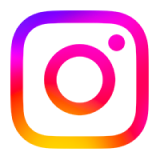How to introduce yourself at a conference
Attended my first Grace Hopper Celebration after 20 years in tech. I'm sharing tips on empowering women and non-binary folks in our field. Learn to craft your story, showcase your value, and use diverse skills to stand out.

As a woman with two decades in tech, I recently attended my first Grace Hopper Celebration—a conference empowering women and non-binary individuals in our industry. My goals were simple: learn about the event, propose a future talk, and connect with new people.

I hosted group sessions and 1:1s with 10 incredible individuals. In these cohorts, I provided the gift of a mirror for these aspiring technologists. We reflected on their unique experiences, aspirations, and potential. We analyzed different vantages and angles of their professional identity, empowering each person to move closer to the version they aspire to be with actionable takeaways.
Finding a job in this market is tough. I spent considerable time reviewing resumes and portfolios. I want to share the core piece of advice I repeated 10x. When someone reads your work—resume, portfolio, anything...
they're actively building a trust bank and thinking, 'So what? Why should I care?' followed by 'what and how?'"
This advice came from a brilliant PM (Emma L) I once worked with, forever changing how I communicated.
Grace Hopper highlights on IG

Crafting Your Narrative
When presenting yourself, think about how you'd communicate your value proposition. In the marketing and product world, a purchase funnel describes the user journey a customer moves through: awareness > consideration > intent > conversion.
- Awareness is knowing you/topic exist.
- Consideration is when the audience thinks about your offer.
- Intent is when the audience showed active signs of interest.
- Conversion is when the audience acquires the service or product.
These core principles can be applied towards describing ourselves, with the end goal anchored towards building trust.
In order for designers to build that trust, we need to explain why the delivery was worth it, what was delivered, and how it was delivered. The information sequence and layering matters. What should go first to build a solid foundation, followed by the topping within the audience's mind?
This is why I'm against starting conversations with location, school, or a generic role description. ie. I'm Cat from NYC, I graduated from UMD, and I'm a product designer who empathizes with users.
This pitch is generic and blah. Nothing memorable.
I RARELY introduce myself this way. In fact, I never introduce myself at all. I start with the answers they want, then I tell you why my background provides authority and credibility towards that perspective.
When people say I'm ex-facebook, ex-google, my perspective is that it erodes trust. They are working somewhere else now, and they need to let you know they are credible. Why? If your work is so remarkable, it should stand by itself. I wrote more about this a past post How do I think about career growth and life.
Bar-raise your real value and de-identify yourself from any brand name.
Why? When I see a designer's resume or portfolio, I'm thinking within the context of things I care about:
- Can you build what's needed (apps, websites, branding, marketing)?
- What's your process and toolkit?
- How adaptable are you with these skills/tools?
- Are you responsible and deadline-oriented?
- Can you work autonomously, how much handholding?
- How do you handle solo vs team level responsibility?
I'm waiting for mini-stories and examples that build trust within me, take me on an emotional journey to highlight challenges you overcome or a story of an incremental trajectory.

Move my heart, respect my time. Be Brief. Be Bright. Be Gone.
This is only the starting line, now you have to pitch it.
Throw the ball
Telling the story out loud and watch faces. Did they squint? How did they respond? You are evaluating if the message landed in the way you crafted. Majority of our values are not recognized due to our inability to create the right perception. This is the core tenant of this publication.

Embracing multidisciplinary skills
When I studied at UMD in 2000s, HCI didn't exist as a discipline. You had to force fit into a specific box design, computer science, or marketing.
I dip my hands into many pots. With experience in building tools for backend data engineering, wearing PM hats, and conducting product user research, I sometimes felt less like a "pure" designer.
If you've ever wondered what it's like being multi-passionate and multidisciplinary, well, you're looking at one. I'm 🍻 proud to be a jack of all trades, master of none, though oftentimes better than master of one 🍻
Instead of feeling "weird" that I don't have a super niche, I've realized what I need to say is my superpower is horizontal work and realize the importance of the sequence in which I need to tailor my messaging.
It looks like the gaps have closed over the 20 years i've been in tech. Product, design, and computer science engineering in one spot. Celebrating each other and people who work cross-lines between these domains.
Looking Ahead
I realized I haven't written any visual design articles on Faangboss. Traditionally, a design newsletter should be all about that, but I haven't provided such detail.
I'm curious: what would you like to see more of from me? I'm trying to figure out what will deliver more value for you.
Have a great week ahead,







